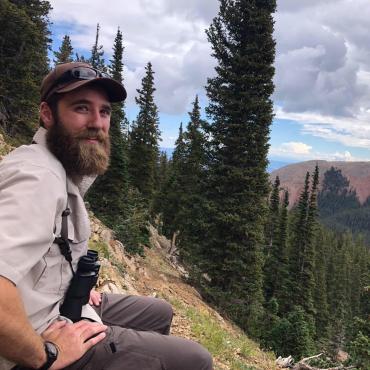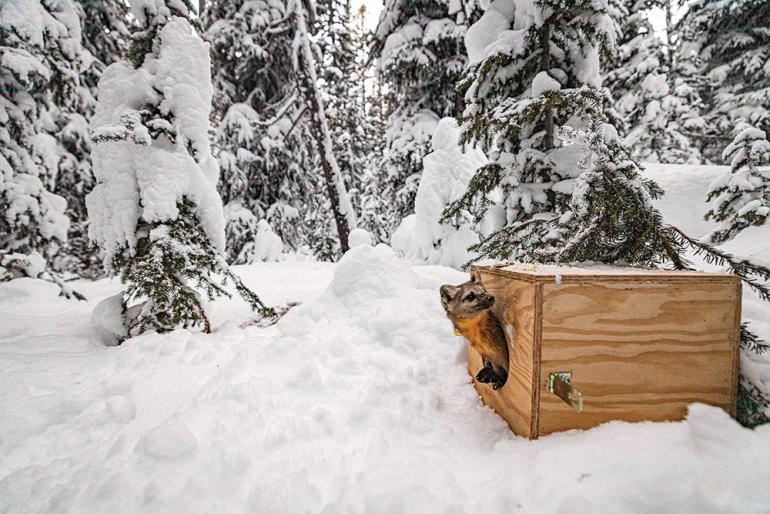Road to Recovery
Marten restoration in the Little Belts.
One of Montana’s smaller predators is reclaiming part of its native range this spring, thanks to a collaborative effort between Montana Fish, Wildlife & Parks (FWP) and several other wildlife organizations.
Martens—members of the weasel family—are present in healthy numbers across many mountain ranges in southwest Montana. But the Little Belt Mountains north of White Sulphur Springs haven’t seen them for roughly a century, primarily due to over-harvest throughout the early 1900s.
Behaviorally, marten are quiet, self-assured, and active year-round. Their slender frame and bold agility help them prey on forest dwellers akin to their own size, such as squirrels and snowshoe hares.
Marten restoration efforts have been successful in many places, including Montana. A project to restore them to the Big Belt Mountains in 1956 proved successful, with marten showing up on camera traps that were set in 2016.
To further marten restoration, FWP and the Montana Natural Heritage Program developed a model to predict areas with the best marten habitat. The model, which combines more than 10,000 marten harvest locations in Montana with various habitat considerations, found that the Little Belt Mountains contain some of the highest-quality unoccupied marten habitat in the state.
Despite the potential for marten to thrive in the Little Belts, they depend constantly on forested habitat and are generally unable to traverse prairies to recolonize isolated mountain ranges on their own. So FWP and partners initiated a restoration project using healthy marten populations from other ranges nearby.
FWP worked with members of the Montana Trappers Association, Furbearers Unlimited, Fur Takers of America, the Great Falls and Southwest Montana chapters of Safari Club International, and the U.S. Forest Service, to get the project done. Funds generated through the Pittman-Robertson Act, an excise tax on hunting equipment and ammunition, helped this collaborative effort succeed.
From December through February, volunteer trappers and FWP staff set extensive trap lines in backcountry areas of the Beaverhead, Pioneer, Gallatin, Pintler, Flint Creek, Absaroka, and Beartooth mountain ranges. Volunteer trappers traveled through these areas on snowmobiles, checking traps daily.
The marten were captured using live traps outfitted with an auxiliary wooden den shelter, allowing them to stay warm and be transported safely. These den boxes also allowed FWP biologists to gather genetic samples from each marten before being released in the Little Belts.
Biologists and volunteers met the goal of relocating 30 marten during the project’s initial phase. Supplemental transplants may take place in the coming years to bolster recovery in the Little Belts.
Biologists and volunteers are hopeful this effort will restore a genetically diverse and self-sustaining marten population to the Little Belts—another win for native-species conservation.
Morgan Jacobsen is the Region 3 information officer for Montana Fish, Wildlife & Parks.












